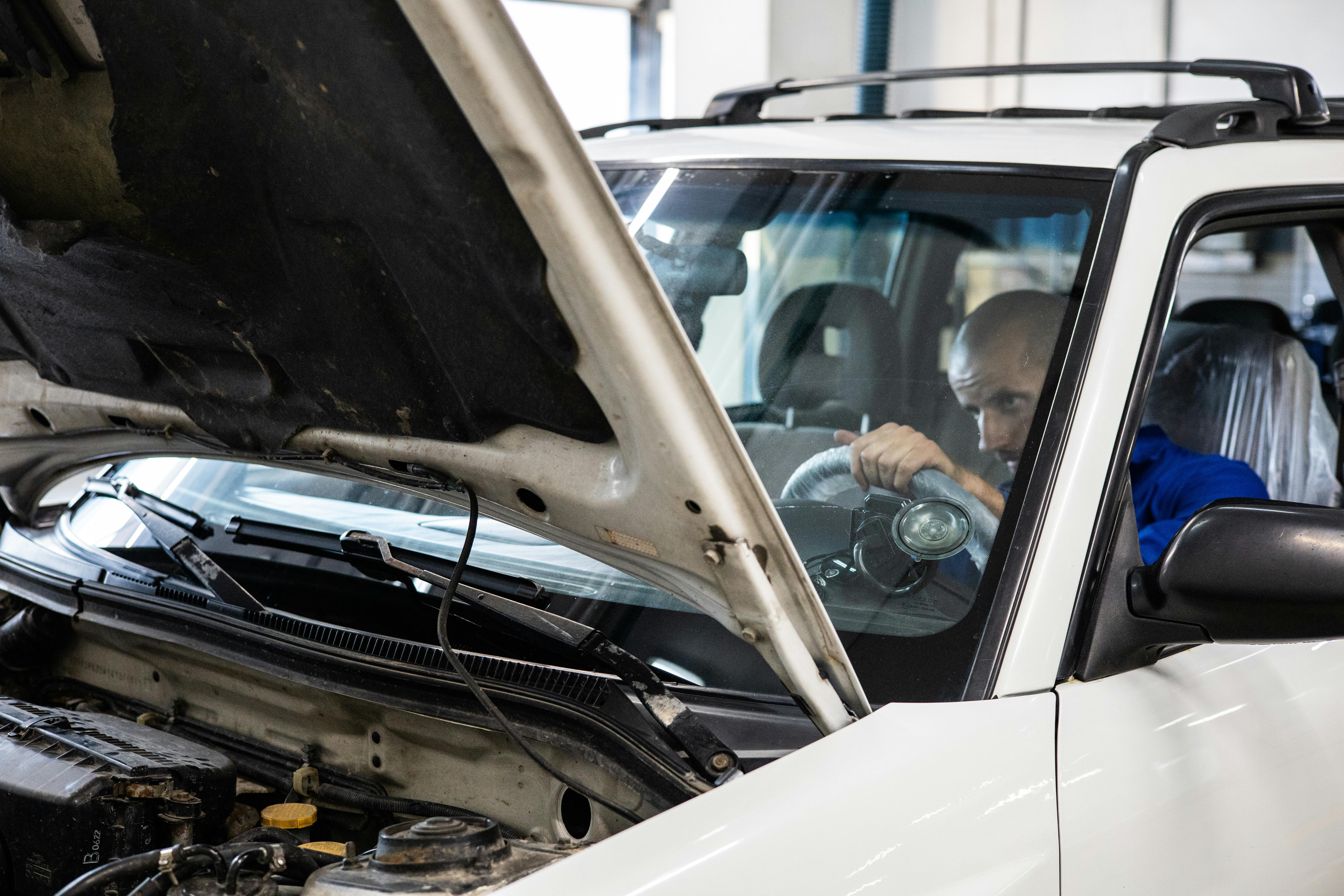Power steering is a critical part of your vehicle's handling and overall safety. When everything works as it should, turning the steering wheel feels effortless, especially at low speeds. But when there's a power steering fluid leak, that ease quickly disappears, making driving more difficult and potentially dangerous.
If you're noticing reduced steering response, whining noises when turning, or unexplained fluid under your vehicle, it may be time for professional power steering repair. Let's look at common causes, potential risks, and repair options—and why turning to a skilled auto mechanic in Puyallup WA is the smart move.
What Causes Power Steering Fluid Leaks?
Power steering systems, especially hydraulic ones, rely on fluid to create pressure and assist your turning effort. Over time, the components that carry or contain that fluid can wear out, leading to leaks. Here are the most common causes:
1. Worn Seals and Gaskets
The seals within the steering rack and around various connections can become brittle or cracked due to age, temperature changes, or exposure to contaminants. Once these seals fail, fluid begins to seep out slowly or even leak rapidly.
2. Cracked or Damaged Hoses
High-pressure hoses carry fluid between the pump and steering components. These hoses are constantly under stress and can eventually develop cracks or splits, especially in older vehicles or in extreme weather conditions.
3. Loose or Corroded Fittings
Metal fittings and clamps can loosen over time due to vibration and thermal expansion. Corrosion can also weaken these parts, causing them to leak fluid where the hose connects to other components.
4. Power Steering Pump Failure
The pump generates the pressure needed to move the power steering fluid through the system. If it develops internal damage or the seals around it degrade, it can begin leaking fluid—sometimes visibly from the front of the engine.
How Leaks Impact Steering and Safety
Ignoring a leak in your power steering system is risky. Here's why timely power steering repair is so important:
- Reduced Steering Assistance: As fluid leaks out, the pressure in the system drops, making it harder to turn the wheel. This is especially noticeable at low speeds or during parking maneuvers.
- Increased Wear on Components: A leak means parts aren't being properly lubricated. The added friction can lead to premature wear or failure of the steering rack and pump.
- Safety Concerns: Loss of steering control can make it difficult to avoid obstacles or respond quickly in an emergency, putting you and others at risk.
- Fire Hazard: In extreme cases, leaking power steering fluid can drip onto hot engine components, increasing the risk of fire.
Signs You Might Have a Power Steering Fluid Leak
Not all leaks are obvious at first. Look out for these warning signs:
- Difficulty turning the steering wheel
- Squealing or whining noises when turning
- Fluid puddles under the front of your vehicle
- Burning smell while driving
- Decrease in power steering fluid levels
If you experience any of these symptoms, it's time to visit an experienced auto mechanic in Puyallup WA to inspect your steering system and determine the cause.
How Power Steering Leaks Are Repaired
Professional power steering repair involves more than just topping off fluid. The first step is to locate where the fluid is escaping, followed by repairing or replacing the damaged parts. Here's what that process usually involves:
1. Thorough Vehicle Inspection Services
A trusted shop begins with a full inspection of your power steering system using a combination of visual checks and pressure tests. This step is essential to pinpoint exactly where the leak is coming from.
2. Replacement of Damaged Parts
Depending on the source, this could involve replacing worn-out seals, cracked hoses, damaged fittings, or even the steering pump or rack. High-quality replacement parts ensure the repair lasts.
3. Fluid Flush and Refill
Contaminated fluid can cause additional damage. Most repairs often involve draining the old fluid, cleaning out any buildup or debris, and refilling the system with the proper fluid type for your car.
4. Final Testing and Inspection
After repairs are completed, technicians test the system to ensure proper pressure and performance. A road test often follows to verify that steering assistance has been fully restored.
Related Articles:
- Power Steering DIY: What's Safe and When to Get Help
- The Impact of Power Steering Fluid on Car Performance
Trust Goods Automotive for Power Steering Repair in Puyallup
If you're searching for dependable power steering repair backed by expert knowledge and top-tier service, look no further than Goods Automotive. Our skilled team is well-versed in diagnosing and repairing both classic and advanced power steering systems. Whether you're driving an older hydraulic setup or a newer electro-hydraulic vehicle, we have the tools and expertise to diagnose and fix leaks correctly.
We use only high-quality parts and provide honest assessments to ensure your steering system functions smoothly and safely. You can rely on us to explain the problem clearly and offer fair, transparent pricing.
Goods Automotive also provides full-service maintenance and vehicle inspection services for all makes and models. Whether you're due for a routine checkup or suspect an issue with your suspension, brakes, or transmission, our ASE-certified team is here to help.
We're proud to be a go-to auto mechanic in Puyallup WA for power steering repair and more, trusted by drivers who value honesty, skill, and efficiency. Reach out today!

